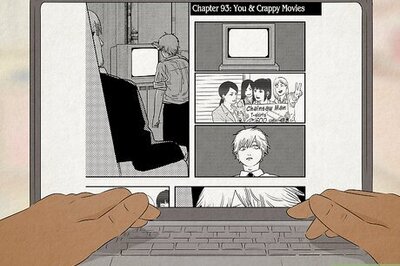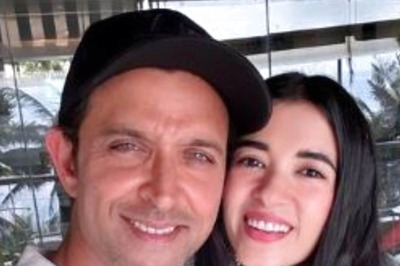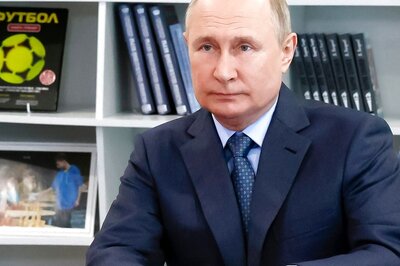
views
New Delhi: In 1990, a Burmese student hijacked a Thai jetliner to Calcutta and demanded an end to military rule in Myanmar. Over a decade later, the then defence minister George Fernandes shared a stage with the hijacker, Soe Myint, and promised him full support in facing the trial that had been mounted against him.
The kurta clad defence minister had once himself been charged with sedition and Myint was one of two students who had hijacked the plane with a laughing Buddha statue, which they pretended was a bomb. This happened before the September 11, 2001 attack on the World Trade Tower in United States. A lot has changed since then. Myint was acquitted in April 2003 and is the editor of Mizzima, a Burmese media group, which became the first private company with which Prasar Bharti agreed to share content last year.
What never changed, pointed out Anil Hegde who for decades was Fernandes’s Man Friday, was his “commitment to the cause of democracy”. “His doors were always open. When students and activists fled from Myanmar and spoke to him about the atrocities being committed by the military junta, he gave them refuge,” said Hegde.
In May 1990, the Myanmar government had held free elections for the first time in three decades, and the Aung San Suu Kyi-led National League for Democracy had won 392 of the total 492 seats. But the military junta had refused to cede power and continued to rule until its eventual dissolution in March 2011.
In Delhi, Fernandes opened the doors of his residence at 3, Krishna Menon Marg for students and activists from the country. “The students organised the All Burma Student’s League and their fax number was the same as that of the defence minister and they lived in the outhouse of the official residence,” added Hegde.
Myint was one such student.
The ‘laughing Buddha’ Hijack
Myint and Htin Kyaw Oo, students at Rangoon University, had no trouble sneaking in the tightly wrapped ‘Laughing Buddha’ statue onto Thai Airways Airbus A300 that was flying from Bangkok to Yangon, the Burmese capital formerly called Rangoon. There were 219 passengers and crew on board, who were released over the next six hours and in a news conference afterwards, the two explained that they were unarmed and had no intention of harming anyone.
They demanded the release of pro-democracy leader U Aung San Suu Kyi, who was under house arrest in Rangoon, an end to martial law, the release of political prisoners and cancellation of military tribunals and the sentences they imposed.
A New York Times article about the hijacking quotes a passenger, John Cogan, a lawyer from Houston describing the hijackers as ‘gentle’. "There was a little tension at the beginning…The hijackers moved women and children to the front and the men to the back of the plane. When people moved, the hijacker would threaten to push the button. But he repeated several times that he meant no harm,” he had said.
The two had landed the plane in Calcutta. Their ‘weapon’ was confiscated but the Indian government was sympathetic to the Burmese opposition and although they were in Calcutta jail for the next few months, no passengers had filed complaints and neither had Thai Airways. “It was a different time. Can you imagine a hijacker coming off a plan and holding a press conference? But the two students were given heroes’ welcome once they landed,” said a retired Calcutta police officer.
The officer added that the arrested received the support of different international organisations and 30-odd members of the Indian Parliament — most vocal among them, George Fernandes.
The Trial and Fernandes’s Promise
It wasn’t until April 2002 that Myint was charged under India’s Anti-Hijacking Act. This was a week after External Affairs Minister Jaswant Singh had travelled to Rangoon, said a former aide of Fernandes, adding, “The September 11, 2001 attacks had markedly changed the way in which hijack was looked at.” By then Htin Kyaw Oo had moved to Ireland, where he had been granted asylum. But Soe Myint was hauled to court, facing the possibility of life in prison if convicted.
A year later, the Fernandes, now the defence minister and faking flak because of the Tehelka controversy, shared the dias with Myint and promised to support him and spoke about how his doors had always been open to anyone — something the opposition had taken advantage of to declare that the residence was being used for defence deals. The two had been speaking at the release of ‘Burma File: A Question of Democracy’, a collection of stories from Myanmarese news agency, Mizzima, that Myint had edited. Fernandes was the chief guest at the event. Hegde added, "Throughout this period, Fernandes helped him and this was typical of him and the values he believed in."
In July, 2003, sessions judge, Barasat, C.K. Lahiri acquitted Myint for "lack of evidence", maintaining that the depositions provided by the West Bengal police and CID were insufficient.
“At a time when politics of religion and region were thriving, George Fernandes symbolised all that constituted India. Where else will you find a hijacker and a minister sharing stage, and the minister promising to and helping the hijacker?” said the aide.




















Comments
0 comment